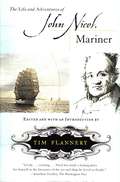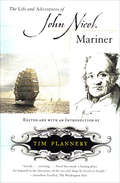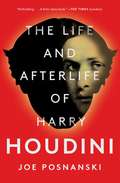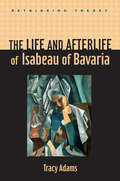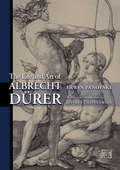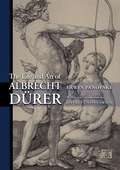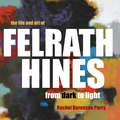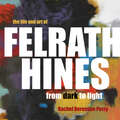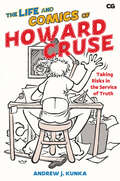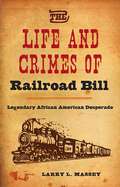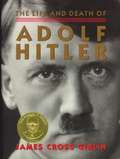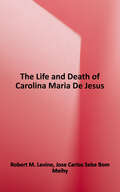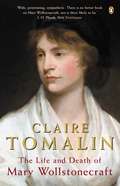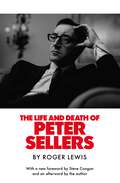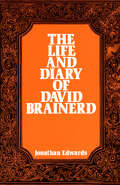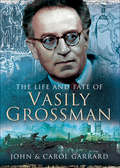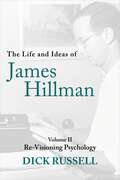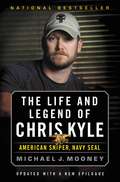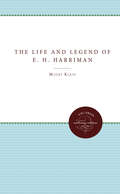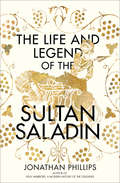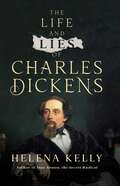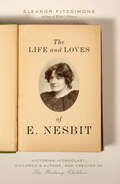- Table View
- List View
The Life and Adventures of John Nicol, Mariner
by Tim FlanneryAn international bestseller, The Life and Adventures of John Nicol, Mariner is a rousing memoir of an ordinary man's extraordinary life, a gripping true adventure tale. In his many voyages, the Scottish-born sailor John Nicol (1755-1825) twice circumnavigated the globe, visiting every inhabited continent while participating in many of the greatest events of exploration and adventure of the eighteenth century. During his career Nicol battled pirates, traded with Native Americans, and fought for the British Navy in the American and French revolutions. In Hawaii, he was entertained by the King's court mere days after the murder of Captain James Cook. In Jamaica, he saw firsthand the horrors of the slave system and befriended slaves who invited him to join in their dance celebrations. En route to Australia, he would meet the love of his life, Sarah Whidam, a convict bound for the Botany Bay prison colony, who would bear his son before duty forced them apart forever.
The Life and Adventures of John Nicol, Mariner
by Tim FlanneryThe Thrilling True Story of an Eighteenth-Century Sailor’s Extraordinary VoyagesThe Life and Adventures of John Nicol, Mariner is a recently rediscovered text that vividly renders the unforgettable story of a man whom history has nearly forgotten.In his many voyages the Scottish-born sailor John Nicol twice circumnavigated the globe, visiting every inhabited continent while witnessing and participating in many of the greatest events of exploration and adventure in the eighteenth century. He traded with Native Americans on the St. Lawrence River and hunted whales in the Arctic Ocean. He fought for the British navy against American privateers in the Atlantic Ocean and Napoléon’s navy in the Mediterranean Sea. In Grenada he witnessed the horrors of the slave system and befriended slaves who invited him to join in their dance celebrations. In the Sandwich Islands (Hawaii) he was entertained by the king’s court mere days after the murder of Captain James Cook. En route to Australia he would meet the love of his life, Sarah Whitlam, a convict bound for the Botany Bay prison colony, who would bear his son before duty forced them apart forever.At the end of his journeys, John Nicol returned to his homeland and a life of obscurity and poverty, until the publisher John Howell met him one day while he was wandering the streets of Edinburgh, searching for dregs of coal to fuel his hearth. After hearing the fascinating stories of Nicol’s seafaring experiences, Howell convinced him to write his memoirs-the publication of which eventually earned Nicol enough money to live comfortably for the rest of his days.An international bestseller, The Life and Adventures of John Nicol, Mariner is a rousing, eminently readable memoir of an ordinary man’s extraordinary life-a great, true-adventure tale. Celebrated scientist and historian Tim Flannery has edited Nicol’s original text, providing accompanying footnotes and an introduction (updated for this North American edition) that give historical context to the sailor’s exploits.
The Life and Afterlife of Harry Houdini
by Joe PosnanskiJoe Posnanski enters the colorful world of Harry Houdini and his legions of devoted fans to explore the illusionist&’s impact on global culture—and why his legacy endures to this day. Nearly a century after Harry Houdini died on Halloween in 1926, he feels as modern and alive as ever. The name Houdini still leaps to mind whenever we witness a daring escape. The baby who frees herself from her crib? Houdini. The dog who vanishes and reappears in the neighbor&’s garden? Houdini. Every generation produces new disciples of the magician, from household names in magic like David Copperfield and David Blaine to countless other followers whose lives have been transformed by the power of Houdini. In rural Pennsylvania, a thirteen-year-old girl finds the courage to leave a violent home after learning that Houdini ran away to join the circus; she eventually becomes the first female magician to saw a man in half on television. In Australia, an eight-year-old boy with a learning impediment feels worthless until he sees an old poster of Houdini advertising &“Nothing on earth can hold Houdini prisoner,&” and begins his path to becoming that nation&’s most popular magician. In California, an actor and Vietnam War veteran finds purpose in his life by uncovering the secrets of his hero. But the unique phenomenon of Houdini was always more than his death-defying stunts or his ability to escape handcuffs and straitjackets. It is also about the power of imagination and self-invention. His incredible transformation from Ehrich Weiss, humble Hungarian immigrant and rabbi&’s son, into the self-named Harry Houdini has won him a slice of immortality. No one has withstood the test of time quite like Houdini. Fueled by Posnanski&’s personal obsession with the magician—and magic itself—The Life and Afterlife of Harry Houdini is a poignant odyssey of discovery, blending biography, memoir, and first-person reporting to trace Houdini&’s metamorphosis into an iconic figure who has inspired millions.
The Life and Afterlife of Isabeau of Bavaria (Rethinking Theory)
by Tracy AdamsThe fascinating history of Isabeau of Bavaria is a tale of two queens. During her lifetime, Isabeau, the long-suffering wife of mad King Charles VI of France, was respected and revered. After her death, she was reviled as an incompetent regent, depraved adulteress, and betrayer of the throne. Asserting that there is no historical support for this posthumous reputation, Tracy Adams returns Isabeau to her rightful place in history. Adulteress and traitor—two charges long leveled against the queen—are the first subjects of Adam’s reinterpretation of medieval French history. Scholars have concluded that the myths of Isabeau’s scandalous past are just that: rumors that evolved after her death in the context of a political power struggle. Unfortunately, this has not prevented the lies from finding their way into respected studies on the period. Adams’s own work serves as a corrective, rehabilitating the reputation of the good queen and exploring the larger topic of memory and the creation of myth. Adams next challenges the general perception that the queen lacked political acumen. With her husband incapacitated by insanity, Isabeau was forced to rule a country ripped apart by feuding, power-hungry factions. Adams argues that Isabeau handled her role astutely in such a contentious environment, preserving the monarchy from the incursions of the king’s powerful male relatives. Taking issue with history’s harsh treatment of a woman who ruled under difficult circumstances, Adams convincingly recasts Isabeau as a respected and competent queen.
The Life and Art of Albrecht Dürer
by Jeffrey Smith Erwin Panofsky<p>This classic text presents the life, times, and works of Albrecht Dürer. Through the skill and immense knowledge of Erwin Panofsky, the reader is dazzled not only by Dürer the artist but also Dürer in a wide array of other roles, including mathematician and scientific thinker. Originally published in 1943 in two volumes, The Life and Art of Albrecht Dürer met with such wide popular and scholarly acclaim that it led to three editions and then, in 1955, to the first one-volume edition. Without sacrifice of text or illustrations, the book was reduced to this single volume by the omission of the Handlist and Concordance. The new introduction by Jeffrey Chipps Smith reflects upon Panofsky the man, the tumultuous circumstances surrounding the creation of his masterful monograph, its innovative contents, and its early critical reception. Erwin Panofsky was one of the most important art historians of the twentieth century. Panofsky taught for many years at Hamburg University but was forced by the Nazis to leave Germany. He joined the faculty at the Institute for Advanced Study in 1935, where he spent the remainder of his career and wrote The Life and Art of Albrecht Dürer. He developed an iconographic approach to art and interpreted works through an analysis of symbolism, history, and social factors. <p>This book, one of his most important, is a comprehensive study of painter and printmaker Albrecht Dürer (1471-1528), the greatest exponent of northern European Renaissance art. Although an important painter, Dürer was most renowned for his graphic works. Artists across Europe admired and copied his innovative and powerful prints, ranging from religious and mythological scenes to maps and exotic animals. The book covers Dürer's entire career in exacting detail. With multiple indexes and more than three hundred illustrations, it has served as an indispensable reference, remaining crucial to an understanding of the work of the great artist and printmaker. Subsequent Dürer studies have necessarily made reference to Panofsky's masterpiece. Panofsky's work continues to be admired for the author's immense erudition, subtlety of appreciation, technical knowledge, and profound analyses.
The Life and Art of Albrecht Dürer
by Erwin PanofskyThis classic text presents the life, times, and works of Albrecht Dürer. Through the skill and immense knowledge of Erwin Panofsky, the reader is dazzled not only by Dürer the artist but also Dürer in a wide array of other roles, including mathematician and scientific thinker. Originally published in 1943 in two volumes, The Life and Art of Albrecht Dürer met with such wide popular and scholarly acclaim that it led to three editions and then, in 1955, to the first one-volume edition. Without sacrifice of text or illustrations, the book was reduced to this single volume by the omission of the Handlist and Concordance. The new introduction by Jeffrey Chipps Smith reflects upon Panofsky the man, the tumultuous circumstances surrounding the creation of his masterful monograph, its innovative contents, and its early critical reception. Erwin Panofsky was one of the most important art historians of the twentieth century. Panofsky taught for many years at Hamburg University but was forced by the Nazis to leave Germany. He joined the faculty at the Institute for Advanced Study in 1935, where he spent the remainder of his career and wrote The Life and Art of Albrecht Dürer. He developed an iconographic approach to art and interpreted works through an analysis of symbolism, history, and social factors.This book, one of his most important, is a comprehensive study of painter and printmaker Albrecht Dürer (1471-1528), the greatest exponent of northern European Renaissance art. Although an important painter, Dürer was most renowned for his graphic works. Artists across Europe admired and copied his innovative and powerful prints, ranging from religious and mythological scenes to maps and exotic animals. The book covers Dürer's entire career in exacting detail. With multiple indexes and more than three hundred illustrations, it has served as an indispensable reference, remaining crucial to an understanding of the work of the great artist and printmaker. Subsequent Dürer studies have necessarily made reference to Panofsky's masterpiece. Panofsky's work continues to be admired for the author's immense erudition, subtlety of appreciation, technical knowledge, and profound analyses.
The Life and Art of Felrath Hines: From Dark to Light
by Rachel Berenson Perry Floyd Coleman Julie L McGee Jennifer McComasFelrath Hines (1913–1993), the first African American man to become a professional conservator for the Smithsonian National Portrait Gallery, was born and raised in the segregated Midwest. Leaving their home in the South, Hines's parents migrated to Indianapolis with hopes for a better life. While growing up, Hines was encouraged by his seamstress mother to pursue his early passion for art by taking Saturday classes at Herron Art Institute in Indianapolis. He moved to Chicago in 1937, where he attended the Art Institute of Chicago in pursuit of his dreams. The Life and Art of Felrath Hines: From Light to Dark chronicles the life of this exceptional artist who overcame numerous obstacles throughout his career and refused to be pigeonholed because of his race. Author Rachel Berenson Perry tracks Hines's determination and success as a contemporary artist on his own terms. She explores Hines's life in New York City in the 1950s and 60s, where he created a close friendship with jazz musician Billy Strayhorn and participated in the African American Spiral Group of New York and the equal rights movement. Hines's relationship with Georgia O'Keeffe, as her private paintings restorer, and a lifetime of creating increasingly esteemed Modernist artwork, all tell the story of one man's remarkable journey in 20th-century America. Featuring exquisite color photographs, The Life and Art of Felrath Hines will explore the artist's life, work, and significance as an artist and as an art conservator.
The Life and Art of Felrath Hines: From Dark to Light
by Rachel Berenson PerryA biography of the artist and first African American man to become a professional conservator for the Smithsonian National Portrait Gallery.Felrath Hines was born in 1913 and raised in the segregated Midwest after his parents left the South to find a better life in Indianapolis. While growing up, he was encouraged by his seamstress mother to pursue his early passion for art by taking Saturday classes at Herron Art Institute. In 1937, he moved to Chicago, where he attended the Art Institute of Chicago in hopes of making his dreams a reality.The Life and Art of Felrath Hines: From Dark to Light chronicles the life of this exceptional artist who overcame numerous obstacles throughout his career and refused to be pigeonholed because of his race. Rachel Berenson Perry tracks Hines’s determination and success as a contemporary artist on his own terms. She explores his life in New York City in the 1950s and ‘60s, where he created a close friendship with jazz musician Billy Strayhorn and participated in the African American Spiral Group of New York and the equal rights movement. Hines’s relationship with Georgia O’Keeffe, as her private paintings restorer, and a lifetime of creating increasingly esteemed Modernist artwork, are part of the story of one man’s remarkable journey in twentieth-century America.Featuring exquisite color photographs, The Life and Art of Felrath Hines explores his life, work, and significance as an artist and as an art conservator.
The Life and Comics of Howard Cruse: Taking Risks in the Service of Truth (Critical Graphics)
by Andrew J. KunkaThe Life and Comics of Howard Cruse tells the remarkable story of how a self-described “preacher’s kid” from Birmingham, Alabama, became the so-called “Godfather of Gay Comics.” This study showcases a remarkable fifty-year career that included working in the 1970s underground comics scene, becoming founding editor of the groundbreaking anthology series Gay Comix, and publishing the graphic novel Stuck Rubber Baby, partially based on his own experience of coming of age in the Civil Rights era. Through his exploration of Cruse’s life and work, Andrew J. Kunka also chronicles the dramatic ways that gay culture changed over the course of Cruse’s lifetime, from Cold War-era homophobia to the gay liberation movement to the AIDS crisis to the legalization of gay marriage. Highlighting Cruse’s skills as a trenchant satirist and social commentator, Kunka explores how he cast a queer look at American politics, mainstream comics culture, and the gay community’s own norms. Lavishly illustrated with a broad selection of comics from Cruse’s career, this study serves as a perfect introduction to this pioneering cartoonist, as well as an insightful read for fans who already love how his work sketched a new vision of gay life.
The Life and Crimes of Railroad Bill: Legendary African American Desperado
by Larry L. MasseyFor over a year, Railroad Bill eluded sheriffs, private detectives hired by the L&N line, and bounty hunters who traveled across the country to match guns with the legendary desperado. The African American outlaw was wanted on multiple charges of robbery and murder, and rumor had it that he stole from the rich to give to the poor. He terrorized busy train lines from east of Mobile to the Florida Panhandle, but as soon as the lawmen got close, he disappeared into the bayous and pine forests--until one day his luck ran out, and he was gunned down inside a general store in Atmore, Alabama.Little is known about Railroad Bill before his infamy--not his real name or his origins. His first recorded crime, carrying a repeating rifle without a license, led him into a gunfight with a deputy and made him a wanted man throughout Florida in 1894. His most celebrated escape--a five-day foot chase with scores of men and several bloodhounds--led to tales of Railroad's supernatural ability to transmogrify into an animal or inanimate object at will. As his crimes progressed from robbing boxcars to wounding trainmen to murdering sheriffs, more and more reward money was offered for his capture--dead or alive.Today, Railroad Bill is the subject of many folk songs popularized by singers such as Paul McCartney, Taj Mahal, Gillian Welch, and Ramblin' Jack Elliot. But who was he? Where did he come from? What events led to his murderous spree? And why did some view him as a hero?In Railroad Bill, Larry Massey separates fact from myth and teases out elusive truths from tall tales to ultimately reveal the man behind the bandit's mask.
The Life and Death of Adolf Hitler
by James Cross GiblinThere are no memorials to Adolf Hitler in Germany, the country he ruled with an iron hand from 1933 to 1945. Nor do visitors flock to his grave, for no one knows where his remains are buried--or if they were buried at all. Perhaps his ashes, like his skull, remain locked away in an archive in Russia. Or perhaps they were scattered to the winds years ago at some unknown location in eastern Europe.<P><P> Winner of the Sibert Medal
The Life and Death of Carolina Maria De Jesus
by Robert M. Levine Jose Carlos Sebe Bom MeihyIn the dozen years, Carolina Maria de Jesus (1914-1977) lived in a São Paulo, Brazil, shanty slum, she survived by rummaging for junk. She also kept a diary of her abject poverty. Black, illegitimate, and poor, she suddenly became at age forty-six Brazil's best-selling author when a book drawn from her diaries appeared in 1960. An English translation, Child of the Dark, was published in 1962 and sold over 300,000 copies in the United States in a decade. Newsweek heralded her book as "a desperate, terrifying outcry from the slums of São Paulo . . . one of the most astonishing documents of the lower depths ever printed." Collaborating with a Brazilian colleague, Levine tells the story of Carolina's life, giving particular emphasis to the years following her publishing success, and engages in a provocative debate over what Carolina's life reveals about such issues as racism in Brazil, the rigidity of the country's class system, and the process of constructing an identity amid constant degradation and poverty.
The Life and Death of Mahatma Gandhi
by Robert PayneMohandas Karamchand Gandhi, son of a high official in a princely court, received from the poet Rabindranath Tagore the title of Mahatma. He was a man who lived in public throughout the greater part of his life, eating, sleeping, bathing, thinking, writing and dreaming in full view of everyone who stayed in his ashram or accompanied him on his journeys, but such men have their own ways of concealing themselves. He wore many public masks and many private ones, and sometimes, like all men, he mislaid the masks and showed himself naked. Also, he was sometimes mischievous, and what seemed to be a mask was often his own face smiling with amusement because he had outwitted the observer. Some proclaimed him to be a Messiah, half-brother to Buddha or Christ, possessing divine attributes, wholly selfless and devoting his life to the good of humanity.
The Life and Death of Mary Wollstonecraft
by Claire TomalinThe Life and Death of Mary Wollstonecraft is the acclaimed bestselling biography by Claire TomalinWinner of the Whitbread First Book PrizeWitty, courageous and unconventional, Mary Wollstonecraft was one of the most controversial figures of her day. She published A Vindication of the Rights of Women; travelled to revolutionary France and lived through the Terror and the destruction of the incipient French feminist movement; produced an illegitimate daughter; and married William Godwin before dying in childbed at the age of thirty-eight. Often embattled and bitterly disappointed, she never gave up her radical ideas or her belief that courage and honesty would triumph over convention.'Tomalin is a most intelligent and sympathetic biographer, aware of her impetuous subject's many failings, yet with the perception to present her greatness fairly. She writes well and wittily' Daily Telegraph'A vivid evocation not only of what Mary went through but also of how women lived in the second part of the eighteenth century. Most of all, however, Tomalin makes Mary Wollstonecraft unforgettable' Evening StandardFrom the acclaimed author of Samuel Pepys: The Unequalled Self, Charles Dickens: A Life and The Invisible Woman, this celebrated biography is the definitive account of Mary Wollstonecraft's life.Claire Tomalin is the award-winning author of eight highly acclaimed biographies, including: The Life and Death of Mary Wollstonecraft; Shelley and His World; Katherine Mansfield: A Secret Life; The Invisible Woman: The Story of Nelly Ternan and Charles Dickens; Mrs Jordan's Profession; Jane Austen: A Life; Samuel Pepys: The Unequalled Self; Thomas Hardy: The Time-Torn Man and, most recently, Charles Dickens: A Life. A former literary editor of the New Statesman and the Sunday Times, she is married to the playwright and novelist Michael Frayn.
The Life and Death of Peter Sellers
by Roger Lewis'A fascinating, tragic and instructive story, vividly told' Sunday TelegraphRoger Lewis, in his no-holds-barred biography, exposes a Peter Sellers the world little knows. Recognized as the greatest British comic since Charlie Chaplin, Sellers was the grand master of fifty-five films - from Dr. Strangelove, to Being There and the Pink Panther hits. But shadowing his phenomenal career was a history of increasingly bizarre behaviour involving psychotic violence, compulsive promiscuity, drug abuse and humiliating self-destructive obsessions with people including Princess Margaret, Sophia Loren, Liza Minnelli and each of his four wives (Ann Hayes, Britt Ekland, Miranda Quarry and Lynne Frederick). He alternately showered his wives and children with gifts and then threatened to kill them. Sellers' fluidity as an actor made for a terrifying madness that grew like a slow metastasizing cancer throughout his adult life. The Life and Death of Peter Sellers concludes with his premature death at the age of 54, 'sick at heart and alone in those sunless hotel rooms', so recoiled from intimacy that no one really knew him anymore.PRAISE FOR THE LIFE AND DEATH OF PETER SELLERS'It is a mad book - but then the subject is a madman. I love Lewis's passion ... I recommend it' Sunday Times'Reinventing the genre as well as reassessing its subject with formidable intelligence, this book is a remarkable achievement' Literary Review
The Life and Death of Peter Sellers
by Roger Lewis'A fascinating, tragic and instructive story, vividly told' Sunday TelegraphRoger Lewis, in his no-holds-barred biography, exposes a Peter Sellers the world little knows. Recognized as the greatest British comic since Charlie Chaplin, Sellers was the grand master of fifty-five films - from Dr. Strangelove, to Being There and the Pink Panther hits. But shadowing his phenomenal career was a history of increasingly bizarre behaviour involving psychotic violence, compulsive promiscuity, drug abuse and humiliating self-destructive obsessions with people including Princess Margaret, Sophia Loren, Liza Minnelli and each of his four wives (Ann Hayes, Britt Ekland, Miranda Quarry and Lynne Frederick). He alternately showered his wives and children with gifts and then threatened to kill them. Sellers' fluidity as an actor made for a terrifying madness that grew like a slow metastasizing cancer throughout his adult life. The Life and Death of Peter Sellers concludes with his premature death at the age of 54, 'sick at heart and alone in those sunless hotel rooms', so recoiled from intimacy that no one really knew him anymore.PRAISE FOR THE LIFE AND DEATH OF PETER SELLERS'It is a mad book - but then the subject is a madman. I love Lewis's passion ... I recommend it' Sunday Times'Reinventing the genre as well as reassessing its subject with formidable intelligence, this book is a remarkable achievement' Literary Review
The Life and Diary of David Brainerd
by Jonathan EdwardsDavid Brainerd&’s life and thought influenced not only his own generation but have also exerted influence on the generations that have lived after him. His life was characterized by an unusual devotion to God and an agonizing examination of personal motives and aspirations. Unswerving in his purpose after being converted to Christ, Brainerd endured many disappointments and hardships in order to take the gospel to the American Indians.The Life and Diary of David Brainerd is a challenging insight into the life of a man greatly used by God, one whose writings can be read with great spiritual benefit.
The Life and Diary of David Brainerd
by Jonathan EdwardsDavid Brainerd&’s life and thought influenced not only his own generation but have also exerted influence on the generations that have lived after him. His life was characterized by an unusual devotion to God and an agonizing examination of personal motives and aspirations. Unswerving in his purpose after being converted to Christ, Brainerd endured many disappointments and hardships in order to take the gospel to the American Indians.The Life and Diary of David Brainerd is a challenging insight into the life of a man greatly used by God, one whose writings can be read with great spiritual benefit.
The Life and Fate of Vasily Grossman
by Carol GarrardVasily Grossman (1905–64), one of the greatest authors of the twentieth century, served for over 1,000 days with the Red Army as a war correspondent on the Eastern front. He was present during the street-fighting at Stalingrad, and his 1944 report The Hell of Treblinka, was the first eyewitness account of a Nazi death camp. Though he finished the war as a decorated lieutenant colonel, his epic account of the battle of Stalingrad, Life and Fate, was suppressed by Soviet authorities, and never published in his lifetime. Declared a non-person, Grossman died in obscurity. Only in 1980, with the posthumous publication in Switzerland of Life and Fate was his remarkable novel to gain an international reputation. This meticulously researched biography by John and Carol Garrard uses archival and unpublished sources that only became available after the collapse of the Soviet Union. A gripping narrative.
The Life and Ideas of James Hillman: Volume II: Re-Visioning Psychology
by Dick RussellJames Hillman, who died in 2011 at the age of eighty-five, has been described by poet Robert Bly as &“the most lively and original psychologist&” of the twentieth century. Based on author Dick Russell&’s interviews with Hillman and dozens of people who knew him, Volume Two of The Life and Ideas of James Hillman takes up Hillman&’s mid-life when he set about returning psychology to its Soul-rich roots in Greek mythology and Renaissance esotericism. From his base teaching at Zurich&’s Jung Institute, we follow Hillman&’s growing international prominence as a maverick in the field, coinciding with his relationship and eventual marriage to Patricia Berry. They would be instrumental in formulating Archetypal Psychology, along with a group of young compatriots in what became known as Spring House. The new ideas taking shape moved psychology away from the dominant scientific/medical model with its focus on treating the isolated individual, expanding into the fertile realm of culture and the imagination. Amid prodigious writings and lectures, Hillman made mythology and even alchemy relevant to our times. Delivering the prestigious Terry Lectures at Yale and being nominated for a Pulitzer Prize, Hillman returned to America after living primarily in Europe for thirty years. To the surprise of many, he settled in Dallas and helped found an Institute of Humanities and Culture while taking up how to re-imagine city planning. Equally surprising was Hillman&’s subsequent move to rural Connecticut, where he and Pat Berry resided in a nineteenth-century farmhouse. Starting in the mid-&’80s, Hillman became a pioneering teacher in the mythopoetic men&’s movement alongside Robert Bly and Michael Meade—where deep talk about fathers and sons and male-female relationships offered a new kind of group therapy, a cultural therapy. As Thomas Moore said of Hillman, he possessed a &“genius for taking any theme and shedding serious fresh light on it.&” Along the way, Hillman&’s insights came to encompass all of the arts, a &“poetic basis of mind&” that connected him to many of the most influential artists and thinkers of the modern era.
The Life and Legend of Chris Kyle: American Sniper, Navy SEAL
by Michael J. MooneyThe life story of Chris Kyle, the American Sniper Journalist Michael J. Mooney reveals the life story of Navy SEAL Chris Kyle, the American Sniper, from his Texas childhood up through his death in February 2013.A brutal warrior but a gentle father and husband, Kyle led the life of an American hero and legend. His heroism and reputation in the military service earned him the nickname "the devil" among insurgents and the nickname The Legend among his SEAL brethren, but his impact extended beyond that after he came home, through his work with fellow veterans.Mooney also sheds light on the life of the suffering fellow veteran who killed Kyle and interviews those closest to the late SEAL. The Life and Legend of Chris Kyle is an honest portrayal of the life of a man whose memorial service brought thousands of people to Cowboys Stadium--the most celebrated war hero of our time.[86 pages]
The Life and Legend of E. H. Harriman
by Maury KleinTo Americans living in the early twentieth century, E. H. Harriman was as familiar a name as J. P. Morgan, John D. Rockefeller, and Andrew Carnegie. Like his fellow businessmen, Harriman (1847-1909) had become the symbol for an entire industry: Morgan stood for banking, Rockefeller for oil, Carnegie for iron and steel, and Harriman for railroads. Here, Maury Klein offers the first in-depth biography in more than seventy-five years of this influential yet surprisingly understudied figure. A Wall Street banker until age fifty, Harriman catapulted into the railroad arena in 1897, gaining control of the Union Pacific Railroad as it emerged from bankruptcy and successfully modernizing every aspect of its operation. He went on to expand his empire by acquiring large stakes in other railroads, including the Southern Pacific and the Baltimore and Ohio, in the process clashing with such foes as James J. Hill, J. P. Morgan, and Theodore Roosevelt.With its new insights into the myths and controversies that surround Harriman's career, this book reasserts his legacy as one of the great turn-of-the-century business titans.Originally published 2000.A UNC Press Enduring Edition -- UNC Press Enduring Editions use the latest in digital technology to make available again books from our distinguished backlist that were previously out of print. These editions are published unaltered from the original, and are presented in affordable paperback formats, bringing readers both historical and cultural value.
The Life and Legend of the Sultan Saladin
by Jonathan PhillipsAn engaging biography that offers a new perspective on one of the most influential figures of the Crusades In 1187, Saladin marched triumphantly into Jerusalem, ending decades of struggle against the Christians and reclaiming the holy city for Islam. Four years later he fought off the armies of the Third Crusade, which were commanded by Europe’s leading monarchs. A fierce warrior and savvy diplomat, Saladin’s unparalleled courtesy, justice, generosity, and mercy were revered by both his fellow Muslims and his Christian rivals such as Richard the Lionheart. Combining thorough research with vivid storytelling, Jonathan Phillips offers a fresh and captivating look at the triumphs, failures, and contradictions of one of the Crusades’ most unique figures. Bringing the vibrant world of the twelfth century to life, this book also explores Saladin’s complicated legacy, examining the ways Saladin has been invoked in the modern age by Arab and Muslim leaders ranging from Nasser in Egypt, Asad in Syria, and Saddam Hussein in Iraq to Osama bin Laden, as well as his huge appeal across popular culture in books, drama, and music.
The Life and Lies of Charles Dickens
by Helena KellyA radical reassessment of the famed Victorian author, revealing the true story behind the creator of some of literature's best-known novels.This dynamic new study of Charles Dickens will make readers re-examine his life and work in a completely different light. First, partly due to the massive digitalization of papers and letters in recent years, Helena Kelly has unearthed new material about Dickens that simply wasn't available to his earlier biographers. Second, in an astonishing piece of archival detective work, she has traced and then joined the dots on revelatory new details about his mental and physical health that, as the reader will discover, had a strong bearing on both his writing and his life and eventual death. Together these have allowed her to come up with a striking hypothesis that the version of his life that Dickens chose to share with his public—both during his lifetime and from beyond the grave in the authorized biography published shortly after his death—was an elaborate exercise in reputation management. Many of the supposed formative events in his life—such as the twelve-year-old Dickens going to work in a blacking factory—may not have been quite as honestly-related as we have been led to believe. And, in many respects, who can blame him? Dickens's celebrity was on a scale almost unimaginable to any author writing today, with the possible exception of J. K. Rowling, and, like many people who become suddenly famous, he soon realized what a mixed blessing it was.
The Life and Loves of E. Nesbit: Victorian Iconoclast, Children's Author, and Creator of The Railway Children
by Eleanor FitzsimonsA Sunday Times Best Book of the Year: The “informative and entertaining” first major biography of the trailblazing, controversial children’s author (The Washington Post).Born in 1858, Edith Nesbit is today considered the first modern writer for children and the inventor of the children’s adventure story. In The Life and Loves of E. Nesbit, award-winning biographer Eleanor Fitzsimons uncovers the little-known details of her life, introducing readers to the Fabian Society cofounder and fabulous socialite who hosted legendary parties and had admirers by the dozen, including George Bernard Shaw. Through Nesbit’s letters and archival research, Fitzsimons reveals “E.” to have been a prolific lecturer and writer on socialism and shows how Nesbit incorporated these ideas into her writing, thereby influencing a generation of children—an aspect of her literary legacy never before examined. Fitzsimons’s riveting biography brings new light to the life and works of this remarkable writer and woman. “Meticulous and invaluable…exceptionally illuminating and detailed.” —The Wall Street Journal“Fitzsimons handily reassembles the hundreds of intricate, idiosyncratic parts of the miraculous E. Nesbit machine.” —The New York Times Book Review“I’ve always loved the work of E. Nesbit—The Railway Children and Five Children and It are my favorites—but I knew nothing about the extraordinary, surprising life of this great figure in children’s literature . . . so gripping that I read [it] in two days.” —Gretchen Rubin, #1 New York Times-bestsellingauthor of The Happiness Project“A charming, lively, and old-fashioned biography . . . highly readable.” —Publishers Weekly“A terrific book.” —Neil Gaiman
